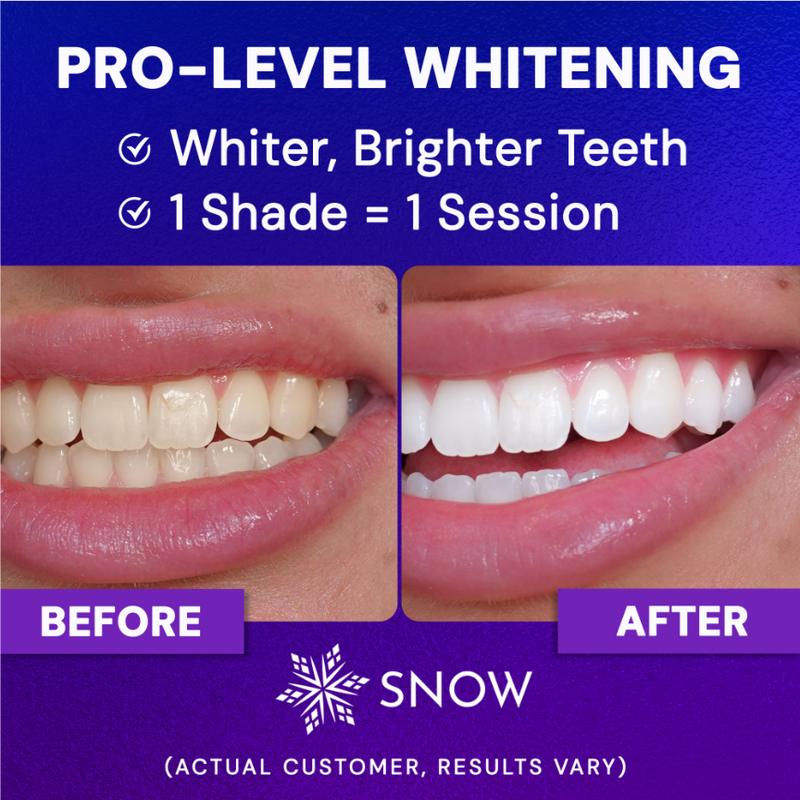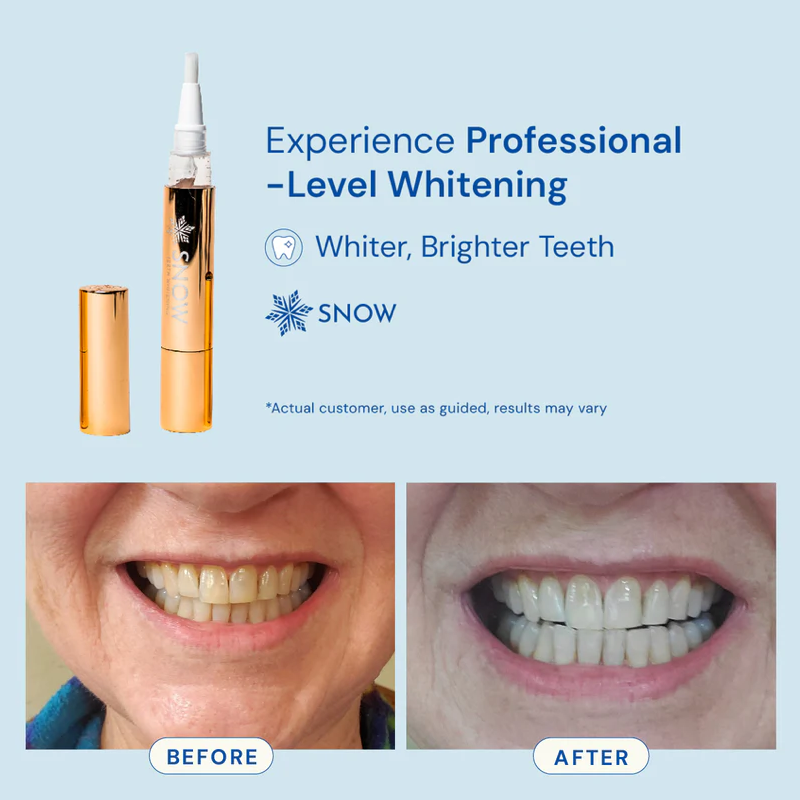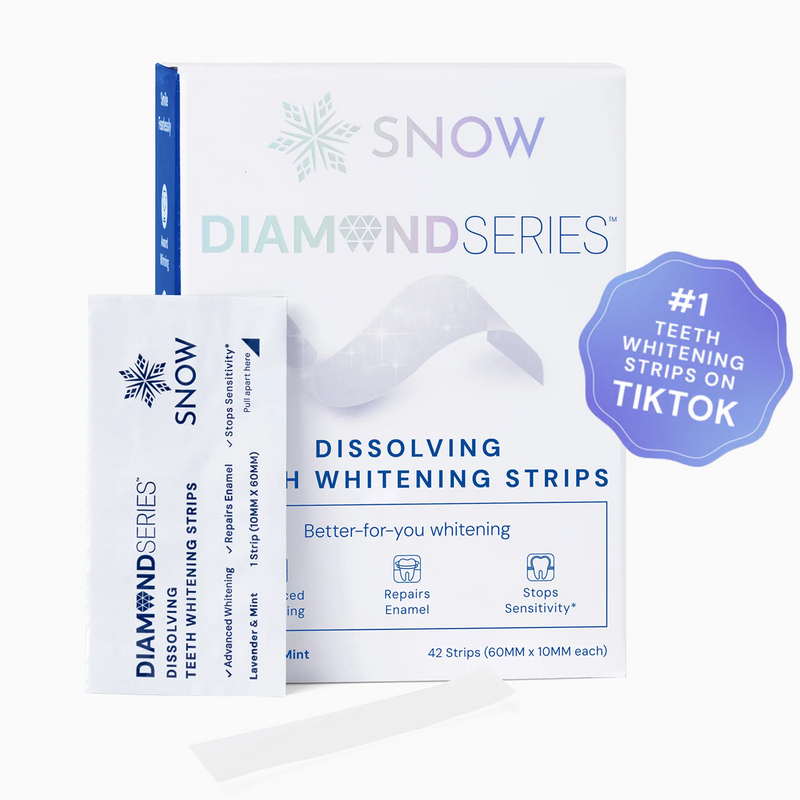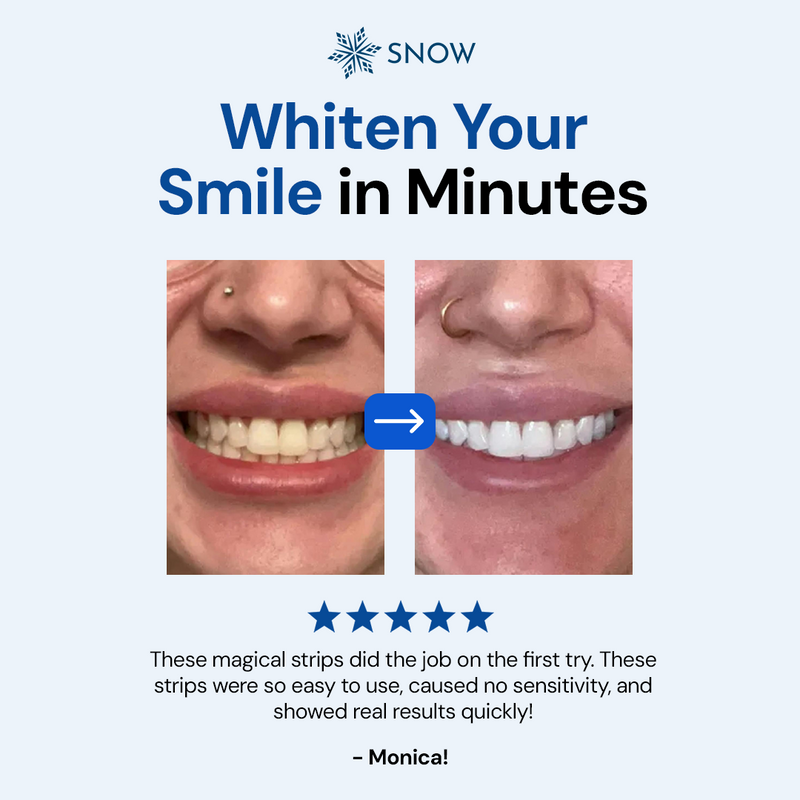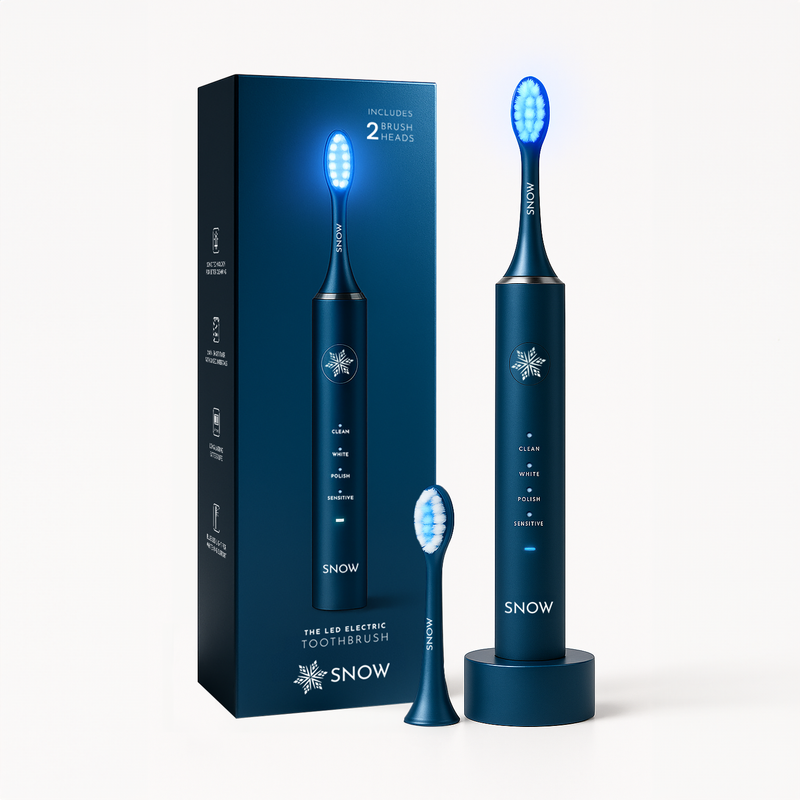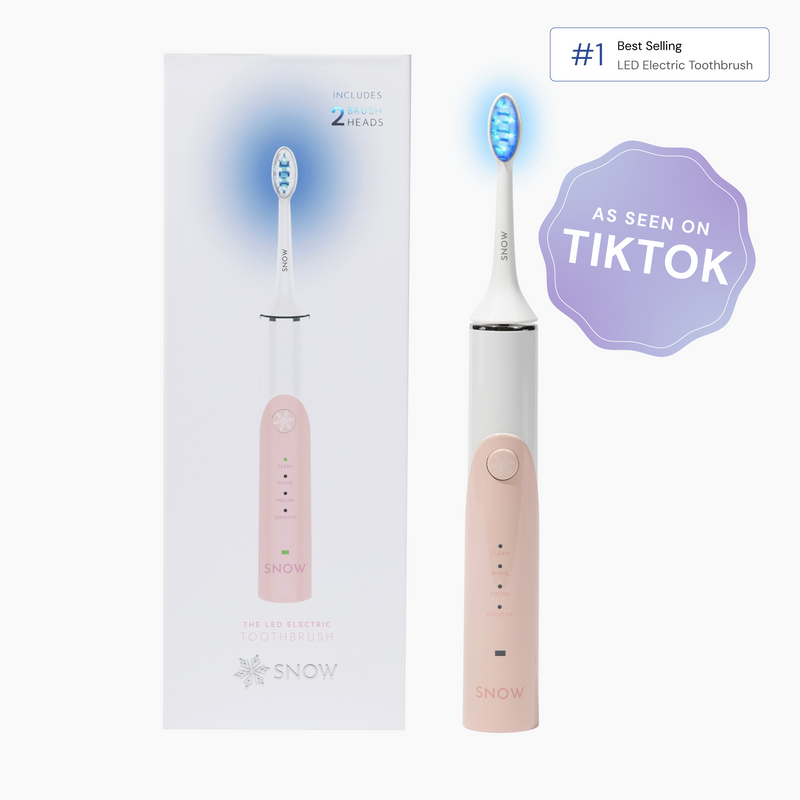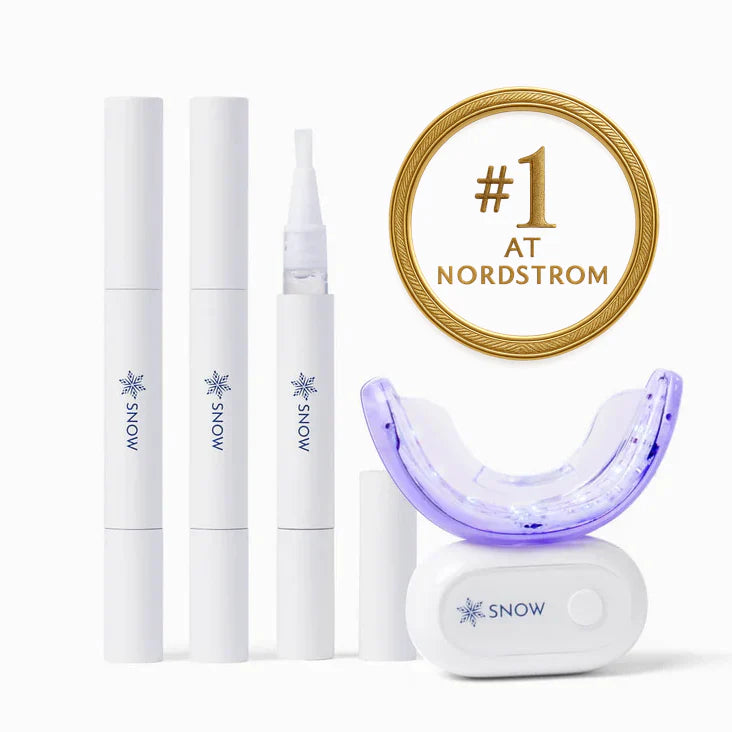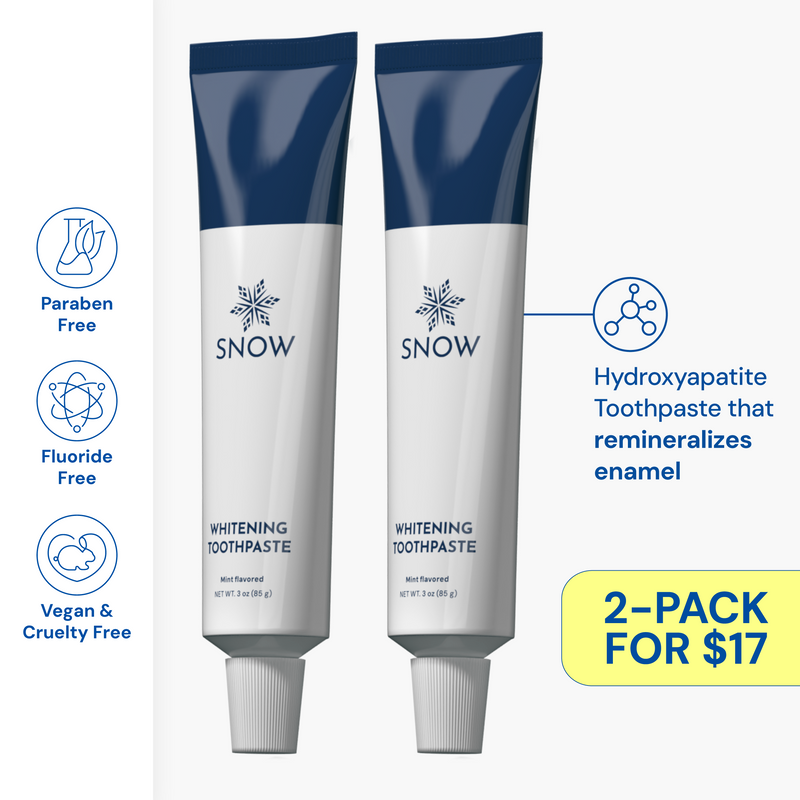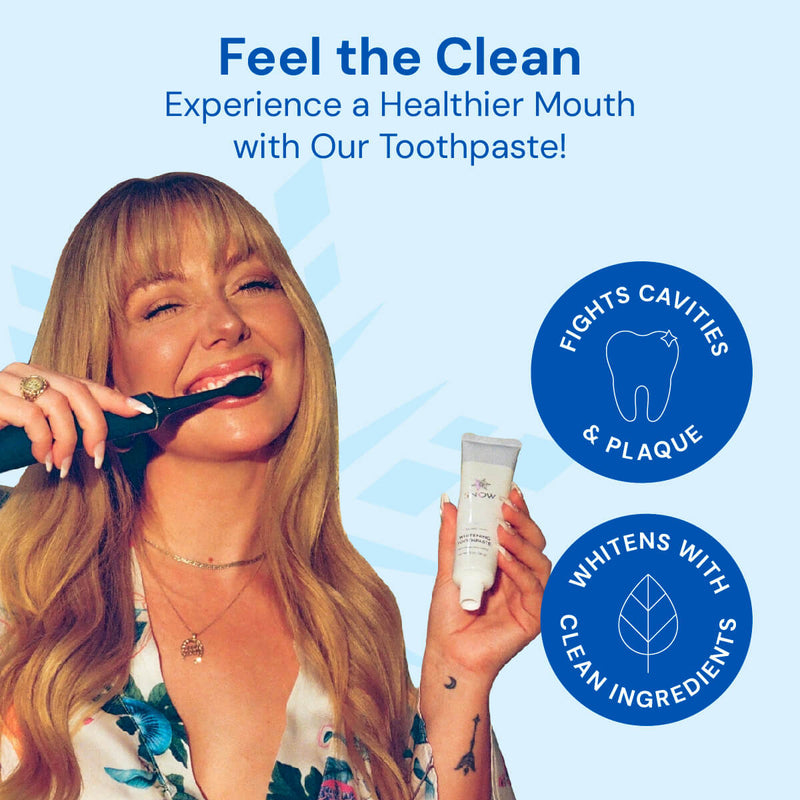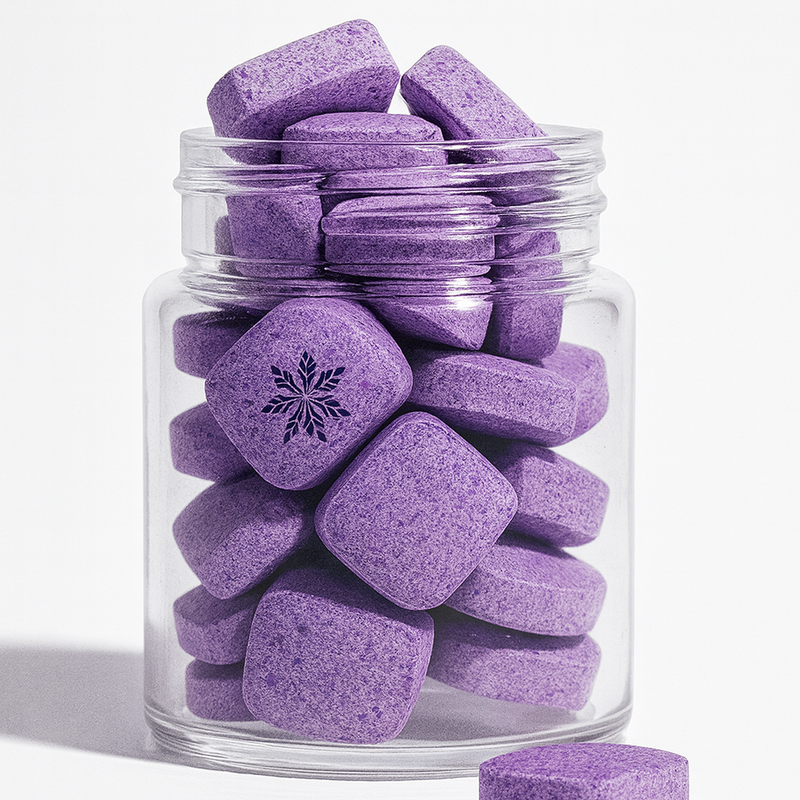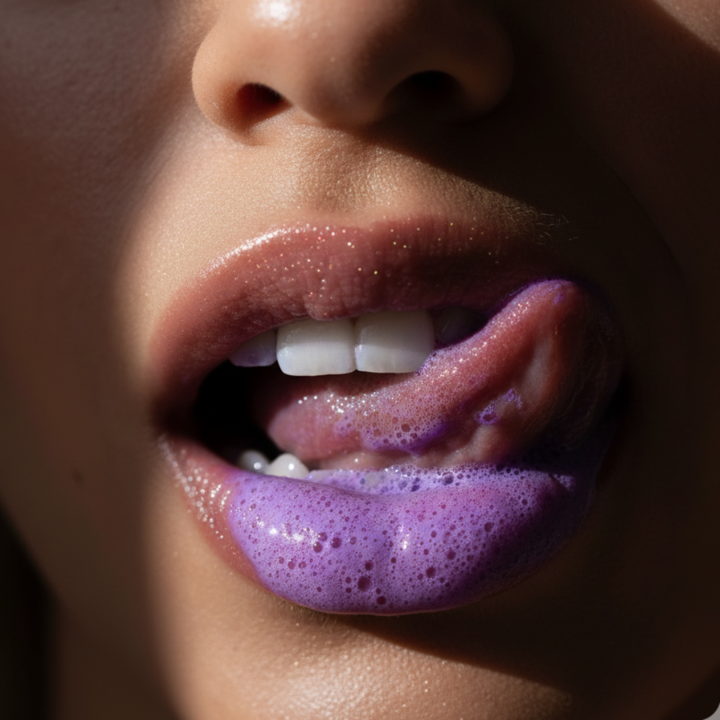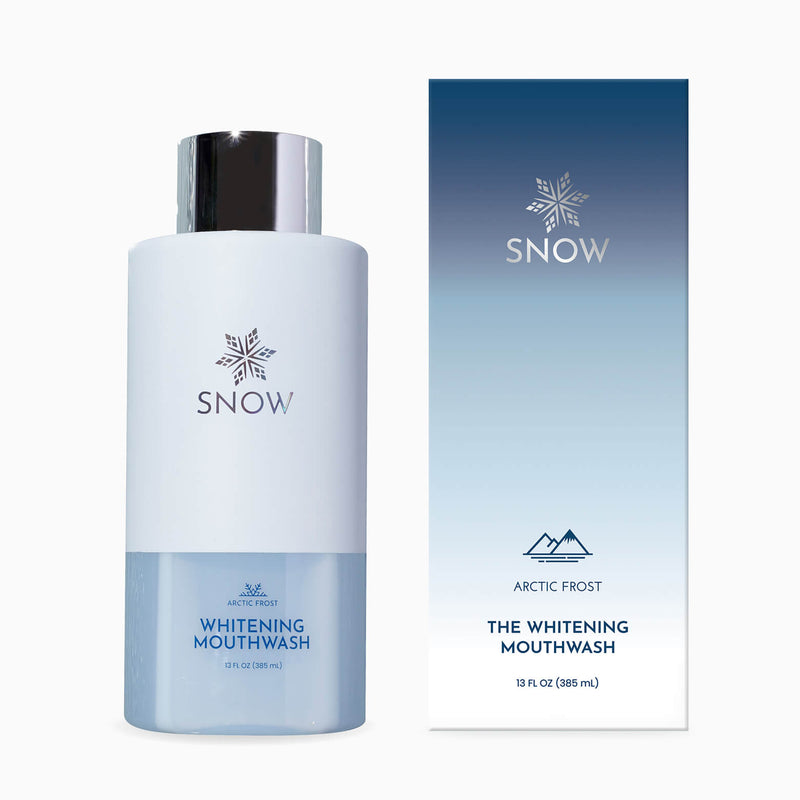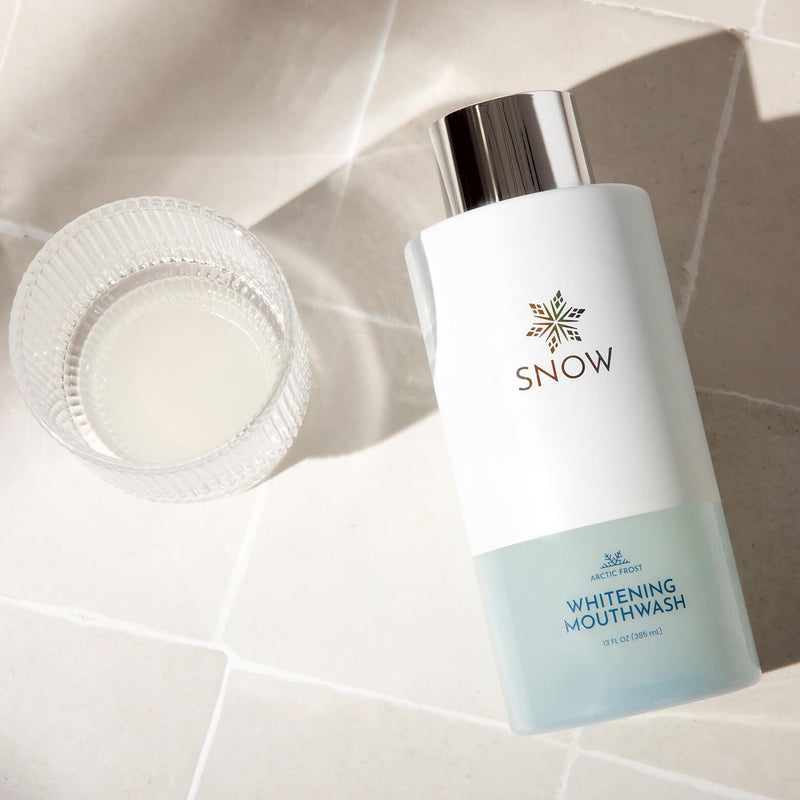White spots appear on your teeth for a number of reasons - from not properly investing in your oral hygiene to a highly acidic diet to something as innocent as wearing braces or a retainer.
If you're wondering how to get rid of white spots on teeth at home, step into the realm of rejuvenating your dental health. Stick with us as we reveal our tried-and-true whitening methods for removing white spots in the comfort of your home.
Using At-Home Remedies for Removing White Spots
Tackling white specks on teeth and white spots on teeth after teeth whitening just got a whole lot easier with SNOW’s versatile at-home whitening products. And it all starts with three easy steps.

1. Invest In A Nutrient-Rich Diet
The health of your teeth is intrinsically tied to your diet. Nutrient deficiencies or consuming sugary and acidic foods can lead to enamel hypoplasia, which in turn can cause white spots.
We determined through our tests that eating foods high in vitamins and minerals, particularly calcium and vitamin D, can strengthen your teeth and lessen the visibility of these marks. Dairy products, green leafy vegetables, and fish are excellent choices to boost your intake of these crucial nutrients. These foods are also less likely to stain your teeth and cause unsightly white spots.
Remedies like our whitening teeth strips are made with safe bleaching agents to successfully reduce years of tooth stains caused by foods, drinks, and medications.
We also recommend using our whitening toothpaste, which contains fluoride and hydroxyapatite, to safely clean and protect your tooth enamel. Pair it with our powder to whiten teeth and you’ll give yourself a SNOW white boost that will restore the natural brilliance of your teeth.
2. Practice Good Oral Hygiene
Our findings show that a rigorous oral hygiene routine is fundamental to preventing white spots on teeth while sick or enamel hypoplasia in normal conditions.
Brushing at least twice a day with our specialized electric whitening toothbrush and flossing daily helps remove plaque, preventing it from hardening into tartar and causing white spots. Healthy oral habits also strengthen your teeth, prevent demineralization, and reduce tooth sensitivity.
Our trusted at-home cleaner smile teeth whitening kit ensures that your smile isn’t just white but uniformly healthy too. The potent whitening wands in our kit contain hydroxyapatite and postassium nitrate to simultaneously reduce tooth sensitivity and repair enamel.
If you’re wearing braces, make sure you clean around the brackets to prevent white stuff in-between teeth. That’s why we recommend using our whitening foam for teeth. It’s paraben-free and effectively cleans dental devices like your braces while gently whitening your teeth at the same time.
3. Stay Hydrated
If you've noticed dehydrated teeth white spots, consider drinking water—and lots of it. Staying hydrated can stimulate saliva production, a natural defense against acid and bacteria in the mouth. This can help keep your enamel strong and prevent the development of white marks on teeth.
You should also try out our tooth whitening mouthwash. It’s alcohol-free and contains mint and aloe, neutralizing bacteria and ensuring your mouth stays fresh and hydrated all day long.
Our investigation demonstrated that SNOW’s at-home tooth whitening remedies are safe and effective strategies for teeth white spot removal at home.
Conclusion
Understanding how to remove white spots on teeth at home plays a crucial role in your journey to achieving a spotless, radiant smile.
We've discovered that a combination of a healthy diet, practicing good oral hygiene, and staying hydrated while using our quality teeth whitening products can help you get rid of white spots.
With SNOW, you get the best at home teeth whitening products that are safe and effective, designed specifically to help you maintain a healthier, brighter smile—and all in the comfort of your own home!
But don't just take our word for it. Try our products today and experience the SNOW difference for yourself!
Did you find the blog helpful? If so, consider checking out other guides:
- Professional Teeth Whitening
- Permanent Teeth Whitening
- Types of Teeth Whitening Options
- How Often Should You Whiten Your Teeth?
- How to Whiten Between Teeth
- What Is Teeth Whitening?
- How to Keep Teeth White
- How White Are My Teeth?
- Should I Whiten My Teeth?
- Are White Teeth Attractive?
- Do You Brush Your Teeth After Whitening Strips?
- White Spots on Teeth After Whitening Strips
- Can You Eat After Teeth Whitening Strips?
- How Long Do Teeth Whitening Strips Last?
- How Long Do Teeth Whitening Strips Take to Work?















































